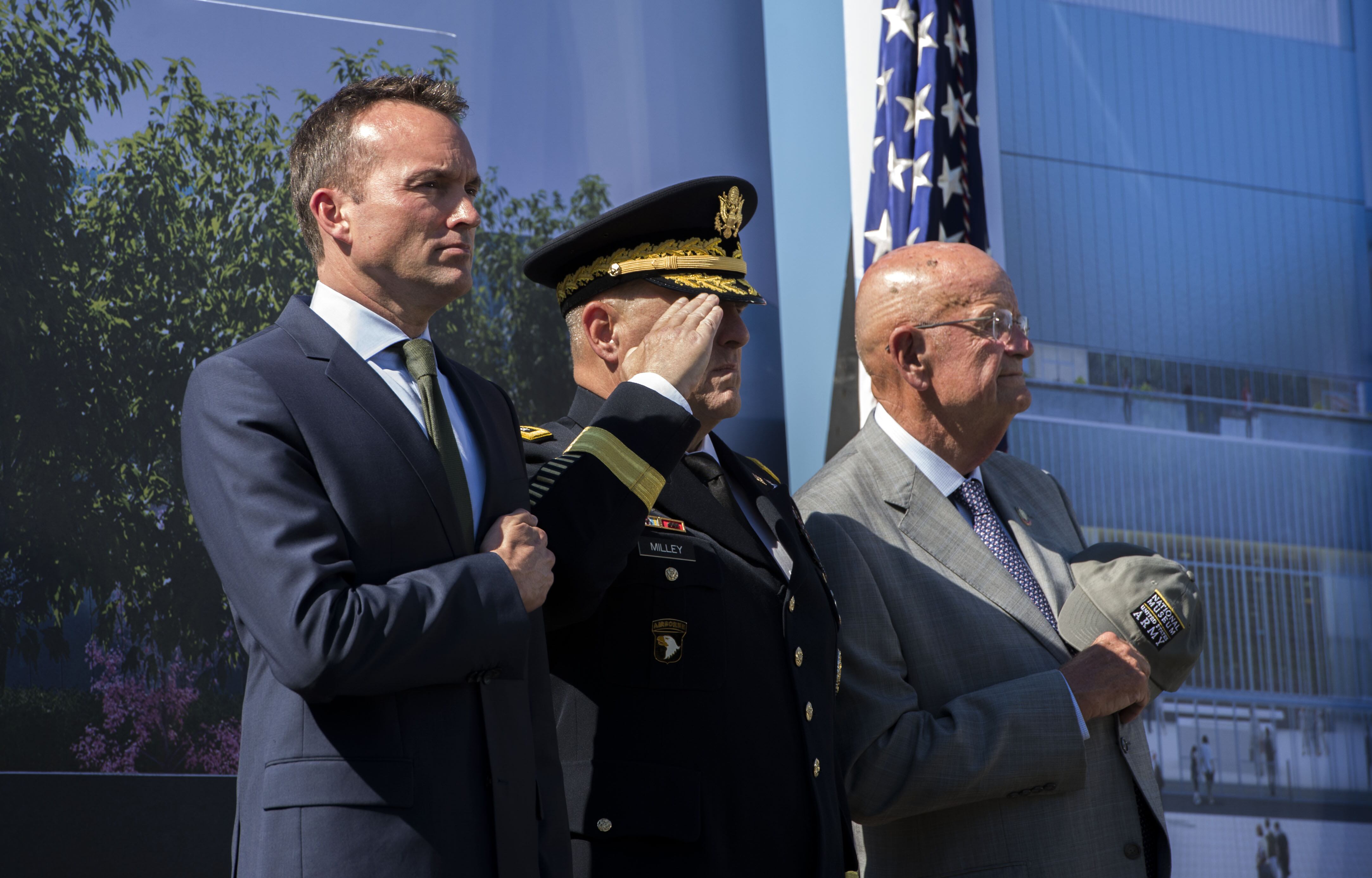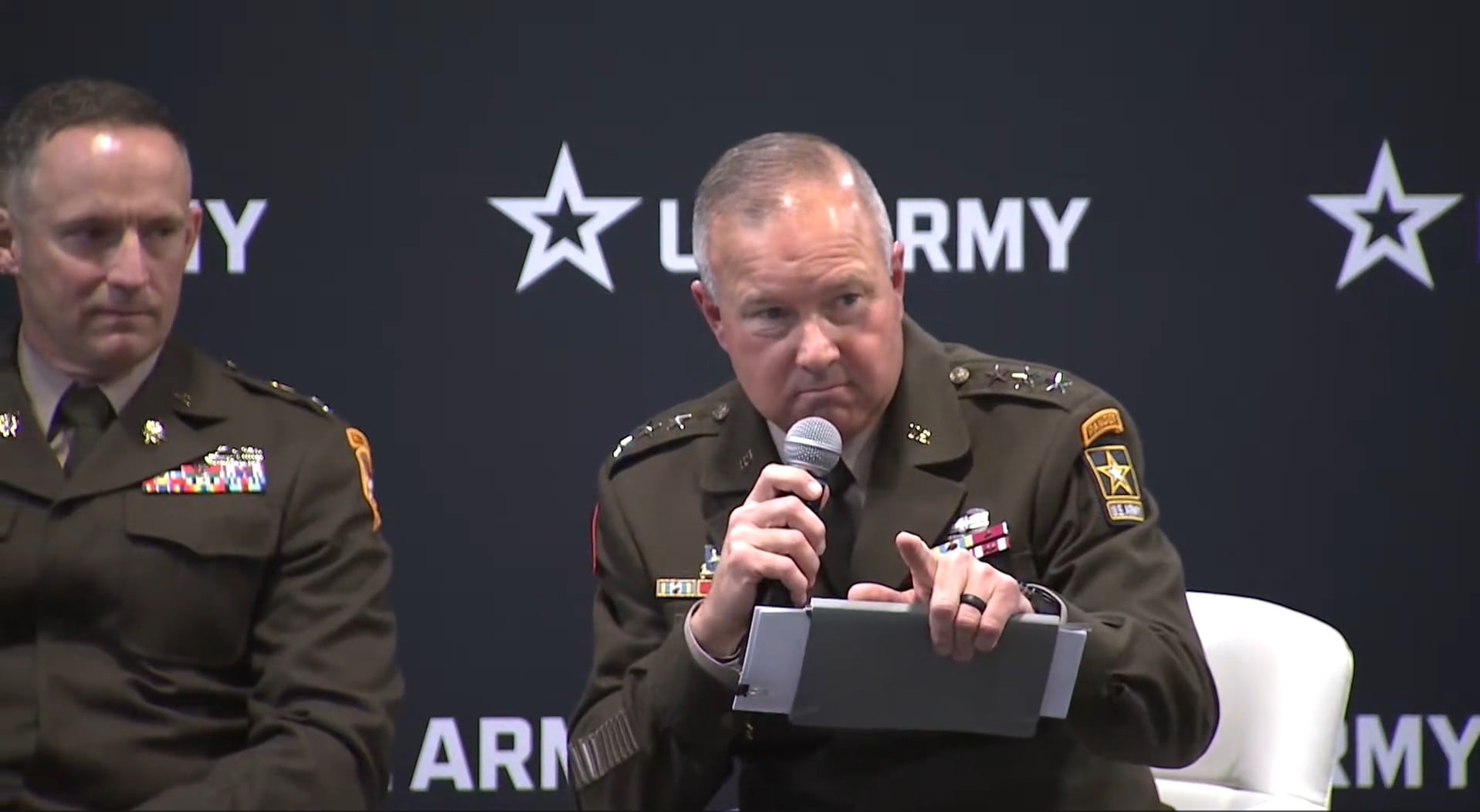After years of work, the Army on Wednesday broke ground on the site of the National Museum of the United States Army.
The museum, which will sit on about 80 acres on Fort Belvoir, Virginia, is scheduled to be completed in 2019. Its 186,000 square feet of space will feature about 30,000 artifacts, documents and images, and more than 15,000 pieces of artwork.
Officials estimate the museum will attract 500,000 to 700,000 visitors a year.
"I'm proud to say that three years from now, the Army will finally have its long overdue national museum," said retired Gen. Gordon Sullivan, chairman of the Army Historical Foundation, during the groundbreaking ceremony. "The history of an institution as old as our nation, and celebrating the service of over 30 million men and women who have worn the uniform of the United States Army, requires a unique national, educational destination."
It is almost impossible to separate the Army’s history with that of the nation, said Army Secretary Eric Fanning.
"Our soldiers have played a critical role in making our nation and world more secure," he said. "This institution will provide the men and women of America’s Army and all our citizens with both a monument and meeting place. This museum will make it possible for more Americans to see how closely the history of their nation and the history of their Army are intertwined."
The Army is the only service that does not have its own national museum, and the National Museum of the United States Army has been years in the making.
The project will cost about $200 million; the Army Historical Foundation is the Army’s official fundraising entity for the project.
"Army history is American history," Sullivan said. "A great army deserves a great museum, and, truly, this museum is going to be a very, very special landmark."
Once it’s built, the museum will provide its visitors with insight into the Army and its history, said Army Chief of Staff Gen. Mark Milley.
"Although you can Google it, you can never truly connect unless you can see the weapons that they used, the uniforms they wore, the stories they told, the letters they wrote, the equipment that kept them alive," he said.

Army Secretary Eric Fanning, Army Chief of Staff Gen. Mark Milley, and retired Gen. Gordon Sullivan, chairman of the Army Historical Foundation, participate in the groundbreaking ceremony for the National Museum of the United States Army Wednesday at Fort Belvoir, Va.
Photo Credit: John Martinez/Army
The museum also will help the public "understand how an army prepared for and fought a war, how an army deters enemies and assures allies, how an army does peacekeeping and humanitarian assistance and disaster relief," Milley said.
"This museum is going to offer everyone an experience you cannot find in the pages of a history book or on Google," he said.
This includes honoring individual soldiers for their contributions while in uniform.
Among the soldiers who will be honored at the museum is 1st Lt. Ashley White-Stumpf, who was killed in October 2011 in Afghanistan while serving alongside the 75th Ranger Regiment as a member of a cultural support team. White-Stumpf’s story is chronicled in the book " Ashley’s War: The Untold Story of a Team of Women Soldiers on the Special Ops Battlefield," by Gayle Tzemach Lemmon.
"Ashley only wanted to help and answer the call, to prove herself as a sister, a daughter, a wife, and, most of all, an American soldier," said Capt. Jason Stumpf, her husband, who spoke during Wednesday’s groundbreaking ceremony.
Another soldier who will be featured is retired Maj. Gen. Leo Brooks Sr., the father of retired Brig. Gen. Leo Brooks Jr. and Gen. Vincent Brooks, who is the commander of U.S. Forces-Korea.
"This is an honor," Leo Brooks Jr. said during the ceremony. "Here, people will get to see, feel and hear the stories of the men and women who shaped our history and paved the way for the freedoms we enjoy."
His father joined the Army in 1954, and he and his wife raised their three children to "always do your best, never be content with average, always remember your actions reflect on others, never quit," Leo Brooks said.
"As he retired, I was able to observe so many people he had touched and shaped and mentored, black and white, male and female, Guard, Reserve, active, uniformed and civilian," Leo Brooks said. "My brother and I both naturally followed in his profession because we could see and feel the nobility of the Army’s core values."
Americans owe a "debt of gratitude" to the men and women and their families who have served in the Army, Leo Brooks said.
"[They] shared in the shedding of blood, sweat and tears, and the comradeship that comes from being a soldier that cannot be replicated in any other profession," he said.
The museum is a tribute to those who have served, a way to "capture the human experience" of the Army, Milley said.
"Right now, today, we have 187,000 soldiers in 140 countries around the world, standing on the wall, facing death and destruction right in the face, and defending our freedom," Milley said. "It is who we are. We all must study it, we all must learn from it, we all must be proud of it."
For more information or to donate to the museum project, visit the Army Historical Foundation website
.
Michelle Tan is the editor of Army Times and Air Force Times. She has covered the military for Military Times since 2005, and has embedded with U.S. troops in Iraq, Afghanistan, Kuwait, Haiti, Gabon and the Horn of Africa.





